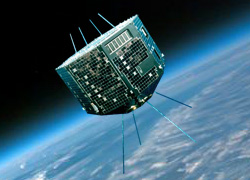
Date of Launch: February 21, 1979
Dimensions: 0.75 m × 0.75 m × 0.65 m Weight: 96 kg
HAKUCHO was the first Japanese X-ray astronomy satellite, named after the black hole Cygnus X-1. (Cygnus is Latin for swan. Hakucho is the Japanese word for swan.) It had an X-ray detector with a modulation collimator to give better positional accuracy, enabling several previously unknown X-ray sources to be identified with optical counterparts.
Major achievements include the discovery of many new sources of X-ray bursts, which are explosive thermonuclear fusion events on the surface of accreting neutron stars.
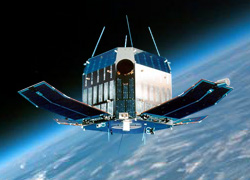
Date of Launch: February 20, 1983
Dimensions: 0.94 m x 0.94 m x 0.89 m Weight: 216 kg
TENMA was equipped with a new device called a Scintillation Proportional Counter which gave better energy resolution than previous detectors. It observed X-rays from black holes and neutron star accreting systems in our Galaxy.
Major achievements include the discovery of plasma at temperatures of tens of millions of degrees Celsius along the galactic plane of our Galaxy.
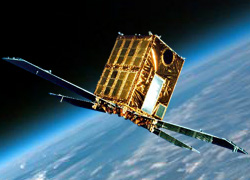
Date of Launch: February 5, 1987
Dimensions: 1.0 m x 1.0 m x 1.5 m Weight: 420 kg
The large area detector on GINGA was a breakthrough in sensitivity, allowing the first detailed observations of faint X-ray sources. It successfully detected X-ray emissions from Supernova 1987A, which occurred right after its launch. GINGA observed the full range of celestial X-ray sources, both galactic and extragalactic.
Major achievements include tracing the spectral evolution of black hole binary accretion flows as a function of mass accretion rate, and the discovery of reflection of X-rays from the accretion disc in Active Galactic Nuclei. Additionally, full-scale international cooperation began with GINGA as the instruments were co-developed with scientists from the United Kingdom and the United States.
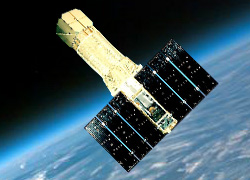
Date of Launch: February 20, 1993
Weight: 420 kg
ASCA achieved a dramatic advance in energy resolution by flying the world’s first X-ray CCD at the focus of an imaging X-ray telescope as well as a Gas Imaging Spectrometer.
Its major achievements include: analysis of the chemical elements produced by supernovae, how these elements are dispersed into the hot gas in clusters of galaxies, the discovery of an iron line from the accretion disc around a black hole with the shape predicted Albert Einstein’s general theory of relativity; and the observation of particle acceleration in supernova remnants.
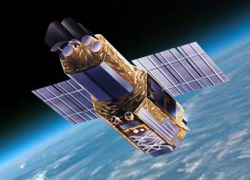
Date of Launch: July 10, 2005
Dimensions: 6.5 m x 2.0 m x 1.9 m Weight: 1700 kg
Suzaku’s energy resolution and angular resolution were even more advanced than those of ASCA. It carries a soft-X-ray telescope and a highly sensitive hard-X-ray detector so it can observe spectra over a wide range in energy.
Its major achievements to date include the observation of the composition of carbon in normal stars and planetary nebula, and the discovery of rare metals in a galaxy cluster that told the history of element composition from a star to a supernova explosion. Suzaku also discovered a black hole covered by thick gas and dust in a galaxy cluster, and observed that explosive phenomena occur in the middle of the Milky Way galaxy. It has performed research on high-energy phenomena in the universe, and found evidence of particle acceleration in a supernova remnant. It is still performing observations, and more achievements are anticipated in the future.
Discovering the Relationship Between Black Holes and Galaxy Formation | Probing the Evolution of the Universe with Galaxy Clusters | Hopes for New Images of the Universe | ASTRO-H Outline
Spin-off Technologies from ASTRO-H | History of Japanese X-ray Astronomy Satellites
